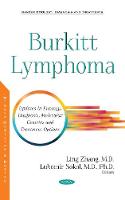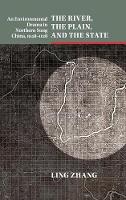Burkitt Lymphoma: Updates in Etiology, Symptoms, Molecular Genetics and Treatment OptionsAuthor :
Hardback
Published : Friday 26 October 2018
You may also like ...

by
Hardback
26 Oct 2018
>>
€224.12
Extended stock - Dispatch 5-7 days

by
Hardback
09 Sep 2016
>>
€106.03
Extended stock - Dispatch 5-7 days
Description
Burkitt lymphoma (BL) is a lymphoid neoplasm originating from a mature, follicular center B-cell that is phenotypically positive for CD10, BCL-6, LOM2, and HGAL, with a hallmark genetic translocation involving the MYC gene (at 8q24) and its partner either immunoglobulin heavy chain (14q) or light chain (kappa at 2q and lambda at 22q) and a very aggressive clinical nature. BL can be divided into three clinical subcategories: Endemic, sporadic and HIV/AIDS/immunodeficiency with prevalence in children, adolescents and young adults. Clinical manifestations could slightly be variable upon its clinical subcategories; however, they share certain similar features, e.g., fast growing mass, frequent extranodal presentation, are associated with EBV infection, and sensitive to tumor reduction therapy with a high risk of tumor lysis syndrome and uric acid nephropathy. It is important to differentiate BL from other aggressive types of B-cell lymphomas as with intensive, short-term chemotherapy, (eg: hyper-CVAD (hyperfractionated cyclophosphamide, vincristine, doxorubicin, dexamethasone, methotrexate, and cytarabine). Additionally, CNS prophylaxis BL showed a much better clinical response. Nearly all types of BL lack or dimly express BCL-2, differentiating it from other mimickers. A diagnostic challenging variant of BL an MYC-negative harboring 11q abnormalities, namely Burkitt-like lymphoma with an 11q aberration has been recently proposed. Novel next generation sequencing and gene expression profiling has brought about new insights into BL. TCF3(E2A), a transcription factor involving the regulation of lymphoid cell survival and proliferation, its negative regulator known as ID3, and the downstream gene CCND3 were also frequently mutated in cases of BL. The characterization of molecular biology and the genetic profile of BL leads to the future of personalized medicine and targeted therapy. This book focuses on the epidemiology, etiology, clinical presentations/staging, differential diagnoses, MYC-driven pathogenesis and therapeutic options concerning BL. These updates in BL and associated EBV- or MYC-positive diseases will benefit trainees, physicians and basic scientists who engage in the diagnosis, treatment, and novel drug development for this disease.
Reviews